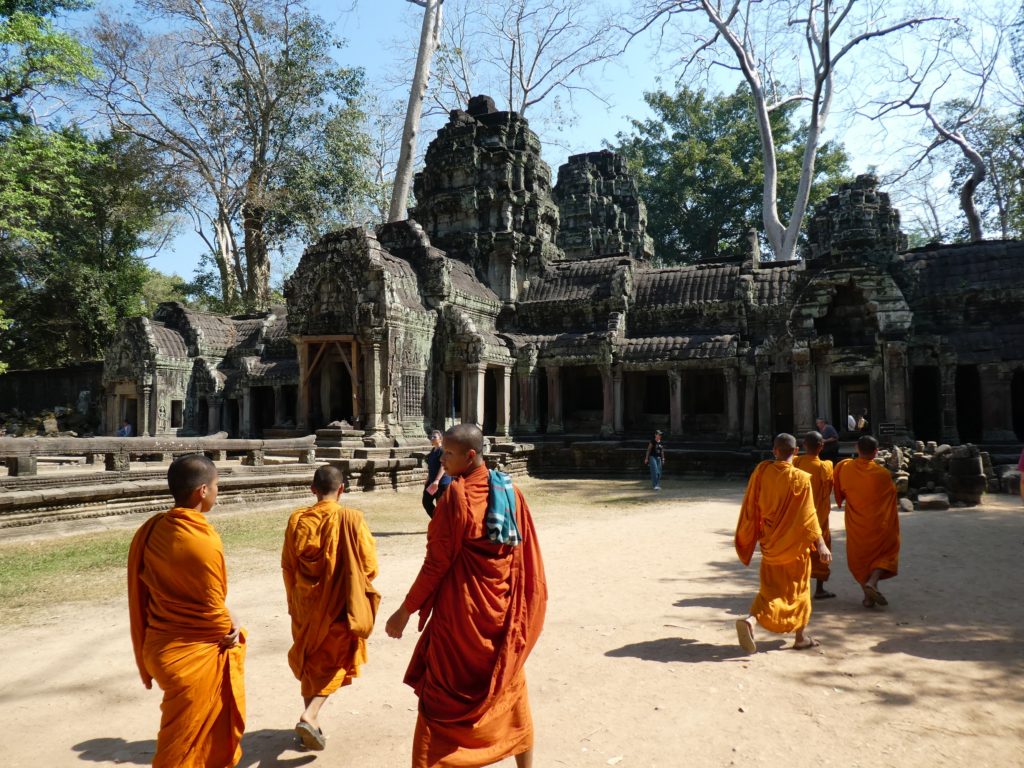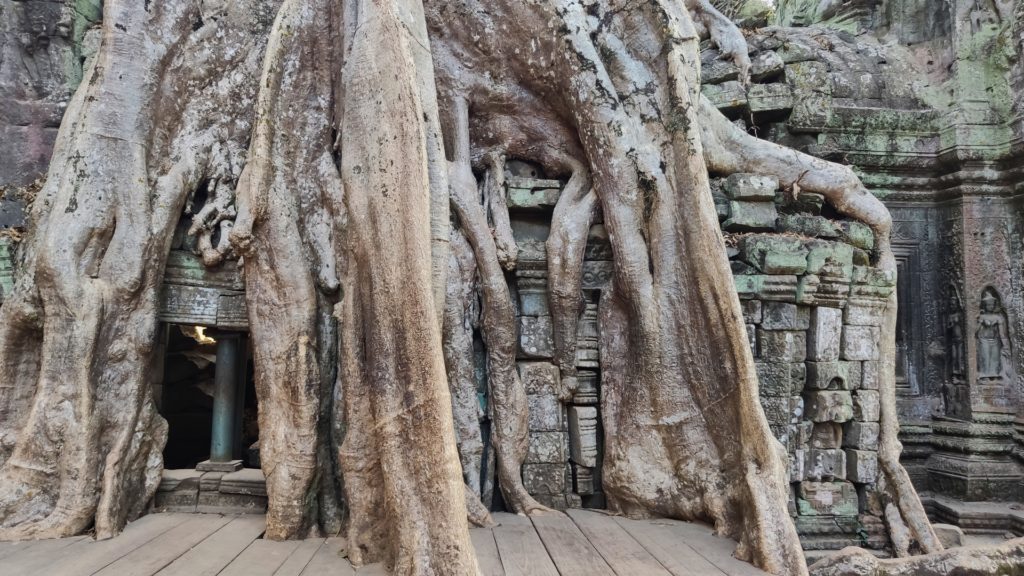Ta Prohm – also known as the Tomb Raider Temple
Ta Prohm is a former temple complex that includes a temple, a monastery, some outbuildings and a wall complex. Located about two kilometers from Angkor Wat, “Ta Prohm” is one of the most famous temple complexes in Cambodia, among other things because the famous “Tomb Raider” filming was shot there in 2001 and every year numerous tourists visit this place also for this reason.

Monks in Ta Prohm
“Ta Prohm” was built around the turn of the 12th century into the 13th century by King Jayavarman VII in the early Bayon style and finally extended by some more buildings under King Indravarman II. At its high time, there were about 80,000 people living in this place, taking care of the cultivation and instan maintenance of the complex. A Buddhist training center is also said to have been located in “Ta Prohm”. The Sanskrit name of the temple “Rajavihara” translated means the “royal monastery” and was dedicated to the mother of King Indravarman II and consecrated to Prajnaparamita (which means “perfection of wisdom”). The portrayed deities and stories are mainly Hindu, but there are also some Buddhist elements (not surprising, since King Indravarman II himself was Buddhist).
Unlike many other temples in the region, “Ta Prohm” has not undergone extensive restoration work after its rediscovery. The temple is probably also known for the numerous huge tree roots that have overgrown the temple over the past centuries – so it is actually an architectural miracle that the temple is still somewhat recognizable and walkable (even if semi-decayed), although nature has spread there so extensively and unhindered.

Tree roots overgrow a temple at Ta Prohm
The temple “Ta Prohm” is completely built in a plain and is composed of many one-story buildings. Today, the path is lined with broken down parts of the buildings, and some sections are completely closed to visitors because the danger of falling rocks is unfortunately too great. Due to the current condition, it is difficult to understand where in earlier times which buildings were located. An interesting fact: In the Khmer Empire it was basically common that temples were built of stone, while the buildings of the inhabitants as well as the king were made of wood. For this reason, today we have to rely on the transmitted writings of visitors to the region, as far as they have been preserved, in order to be able to reconstruct what the “old” Angkor might have looked like.
The entire area within the wall complex covers an area of about 60 hectares and is definitely worth a visit.